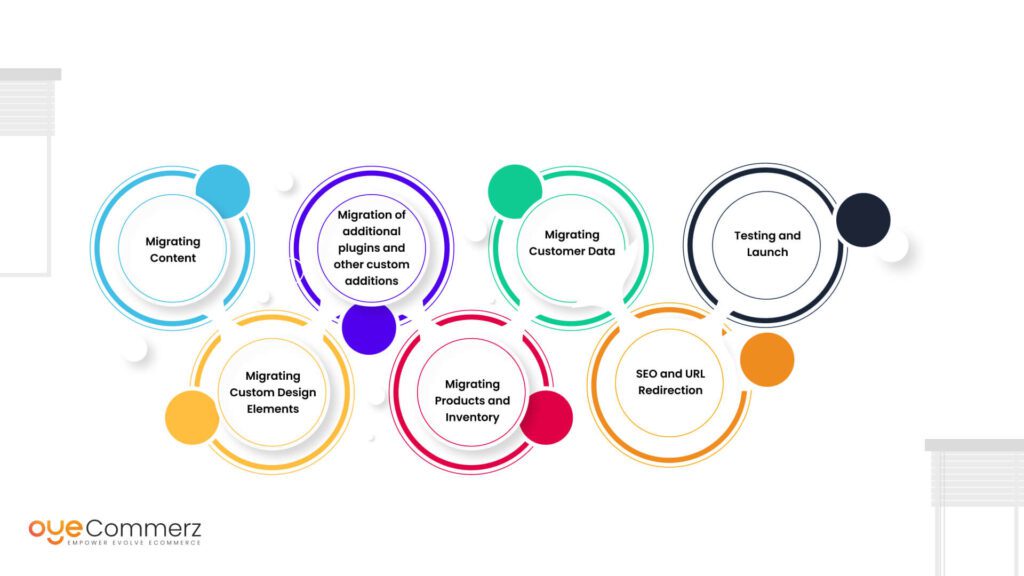In the constantly changing world of online retail, choosing the right platform is crucial for your business's success. If you’re currently using WordPress and planning a migration to an alternative, you’re not by yourself. Numerous businesses are shifting to take advantage of Shopify’s robust features, ease of use, and scalability. This guide will walk you through the journey of migrating from WP to this platform effortlessly, ensuring that you unlock your eCommerce potential.
Why Switch from WP to Shopify?
Before exploring the migration journey, it’s important to know why this transition can be helpful for your eCommerce business:
Intuitive Design: Shopify offers an intuitive system that streamlines store management, enabling for non-technical users.
Flexibility: As your company grows, Shopify can support greater traffic and transactions without affecting speed.
Integrated Features: Shopify provides integrated resources for search engine optimization, analytics, payment processing, and more, minimizing the necessity for multiple plugins.
Advanced Safeguards: With Shopify, you get access to robust security features that protect critical customer information.
Steps for a Seamless Migration
Migrating your eCommerce site from WordPress to Shopify includes multiple steps.
Here’s steps to ensure a hassle-free transition:
Outline Your Migration Approach
Begin by outlining your migration blueprint. Identify which components of your current site you plan to migrate, such as:
Product data
Client data
Order history
Posts
Choose the Best Migration Package
Considering your needs, choose a migration package that aligns with your business. Migration experts offers multiple options:
Starter Package: Ideal for compact stores with minimal products.
Mid-Tier Plan: Recommended for medium-sized businesses with moderate requirements.
Comprehensive Solution: Best for big stores demanding extensive customization.
Secure Your Data
Prior to beginning the migration, ensure that you have a full archive Shopify migration process of your WordPress site. This action is critical in case anything goes awry during the transfer.
Retrieve Your Information from WordPress
Leverage extensions or alternative solutions to export critical information from your WordPress site:
Items
Clients
Sales records
Blog posts
Upload Content into Shopify
When you have your data retrieved, utilize Shopify’s migration apps or external apps to transfer your content into your new store. Ensure that all content is correctly formatted and aligned.
Adapt Your Shopify Platform
Following importing information, adjust your Shopify site’s layout to reflect with your brand identity. Think about working with a developer if you require advanced customization.
Configure Payment Gateways and Shipping Options
Arrange payment gateways and logistics options in Shopify to ensure a user-friendly transaction experience for customers.
Apply Search Engine Optimization Standards
To maintain your online visibility during the migration:
Use 301 URL mappings from existing URLs to updated ones.
Update metadata.
Optimize images and copy for better ranking.
Evaluate Your Migrated Store
Ahead of publishing, extensively review your Shopify platform. Look out for any errors, checkout failures, or incomplete files.
Go Live Your Platform
After everything is in order, it’s time to go live! Inform the update to your users and encourage them to discover the enhanced offerings of your Shopify store.
Post-Migration Guidance
Following launching your new store, ongoing help is important. Explore working with professionals who can guide with:
Site maintenance
Promotional campaigns
Improvement strategies
Conclusion
Migrating from WordPress to Shopify can be a crucial step for your online retail. By using this guide and working with professional services like those offered by OyeCommerz, you can guarantee a smooth transition that enhances your business potential. Shopify integrated tools Embrace the shift and discover the advantages of Shopify today!
